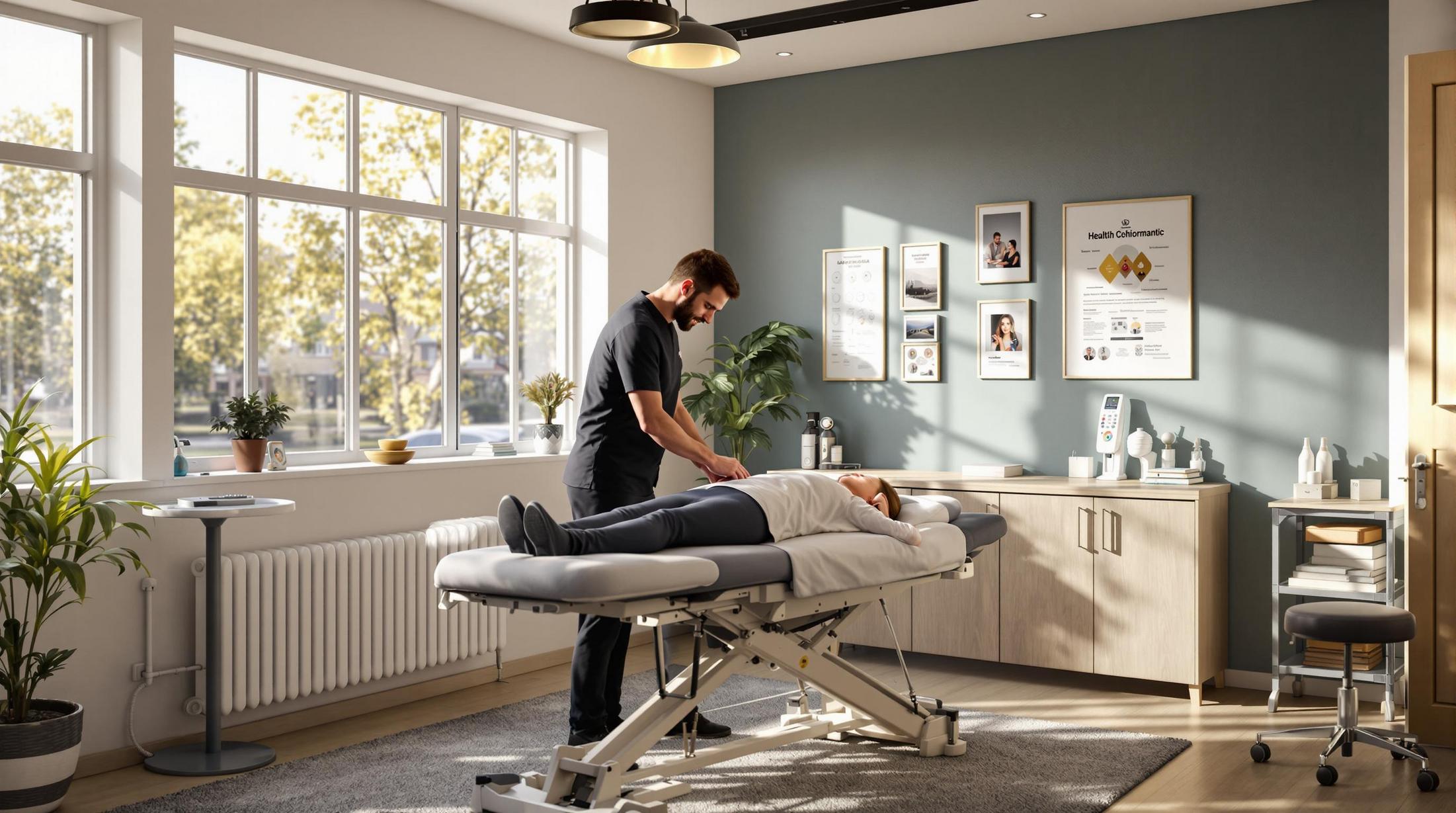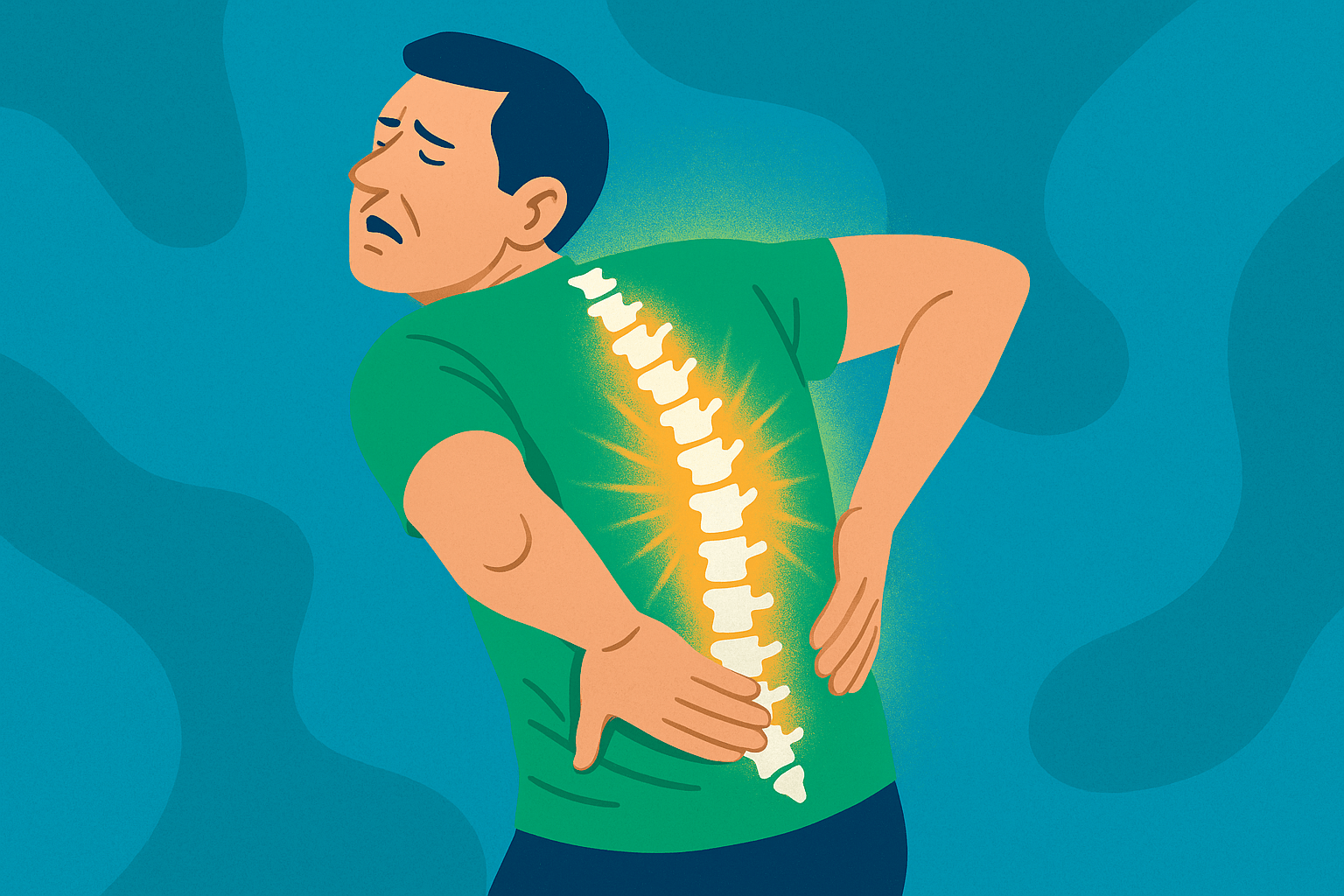Your sleeping position plays a major role in how your spine feels and functions. Poor posture during sleep can lead to stiffness, lower back pain, and even long-term spinal issues. On the other hand, supporting your spine properly while you sleep allows your body to recover, decompress, and stay aligned. In this article, we’ll explore the best sleeping positions for back health — and how to adjust your setup for better rest and recovery.
Jump to:
TLDR – Quick Guide
- Back sleeping will lead to lower back misalignments so should be avoided.
- Side sleeping with a neutral adjustable height pillow and a firm mattress is the best overall sleeping position.
- Avoid stomach sleeping – strains neck and compresses spine
- Use medium-firm mattress for balanced support
- The correct pillow height needs to be found by how it feels to you, not by trying to line up your head, neck and the rest of your spine. This is because your spine is not symmetrical, it will have twists and kinks present due to misalignments that you have already suffered.
Why Sleep Position Matters for Spinal Health
Nighttime = Recovery Time
During sleep, your body enters repair mode. Spinal discs rehydrate, muscles relax, and the nervous system resets. But if your spine is twisted or unsupported, this recovery gets disrupted — often leading to morning pain or chronic tension.
Misalignment Can Happen in Sleep, Too
Even if you maintain perfect posture during the day, poor sleep posture can undo that progress. Extended hours in a misaligned position (especially without realizing it) can aggravate issues like sciatica, herniated discs, or neck stiffness.
Top Sleeping Positions for Back Health
1. Side Sleeping
This position is ideal for 99% of people, especially those with lower back pain or hip discomfort. With the correct pillow height, this position maintains “your” spine in a neutral position and preventing rotation. To find the correct pillow height use this helpful guide.
Why it works:
When your spine is supported in a neutral position, you can maximally relax your entire body.
Tips:
- Only people with severe hip arthritis need a pillow between their knees.
- Legs should be on top of each other.
2. Back Sleeping with a Pillow Under Your Knees
About 1% of our patients find they don’t get on with side sleeping and will sleep on their back. Our lower back and pelvic area is heavier than the rest of the body, so when on your back, that area will sink into the mattress and misalign the lumbar spine. A pillow placed under the knees can sometimes help in this situation.
Placing a pillow under your knees helps flatten the lower back and reduce lumbar stress.
Why it works:
Some people with severe hip arthritis find it difficult to sleep on their side.
Tips:
- Pillow height is absolutely critical when sleeping on the back. Adjust the height of the pillow to make your head neutral.
- Avoid overly soft mattresses that allow your hips to sink in
3. Fetal Position (Modified)
Some people may find that sleeping in a slight fetal position gives them a little more comfort compared to keeping straight while side-lying.
Why it works:
Some people’s spines are misaligned in a way that slight flexion gets their spine into a position of comfort.
Tips:
- Avoid curling too tightly — keep your spine gently rounded, not hunched
- Support your head and neck with an adjustable pillow that keeps the spine in neutral (which is not necessarily a straight line depending on each person’s body).
4. Sleeping on an Incline (for Certain Conditions)
Elevating the head and torso slightly can help people with acid reflux or certain breathing issues. Adjustable beds or wedge pillows make this easier.
However, being in this position will certainly cause misalignments to your spine which will need addressing.
Adopt this position as a last resort only.
Why it works:
Keeping more upright helps fluid stay down.
Tips:
- Make sure the incline is gradual to avoid shifting into poor posture
Positions to Avoid
Stomach Sleeping
Sleeping on your stomach may feel comfortable, but it forces your neck into rotation and flattens the natural curve of your spine. This can lead to morning stiffness, headaches, and nerve tension.
Better Option:
Shift to side sleeping using an adjustable height pillow.
Seek the help of an ABC chiropractor how can help address any spinal misalignments present. This will make side sleeping much easier.
Key Takeaways
- Sleep posture directly affects spine health, recovery, and morning comfort
- Side sleeping is the best position to adopt for spinal alignment.
- Proper pillow and mattress support enhance posture during rest
- Avoid stomach sleeping to protect your neck and lower back
- Consistency in sleep setup promotes long-term postural improvements
FAQs
1. What’s the healthiest sleep position for spinal alignment?
Side sleeping is by far the best position to sleep in. However, the pillow density and height along with mattress firmness are critical in helping you achieve the perfect position.
2. Can side sleeping cause shoulder pain?
Yes, if your pillow is too low, you can get shoulder pain, pins and needles in your hand or hip pain.
3. Why is stomach sleeping bad for your back?
It flattens your lumbar curve and twists the neck, which can cause spinal strain and tension.
4. What kind of mattress is best for posture?
A firm mattress is best. Advanced BioStructural Correction Europe has designed the perfect mattress for support and comfort. Find out more about it here
5. Can a chiropractor help with sleep posture issues?
Yes. A chiropractor can identify misalignments caused by poor sleep posture and offer corrective care and setup advice.






